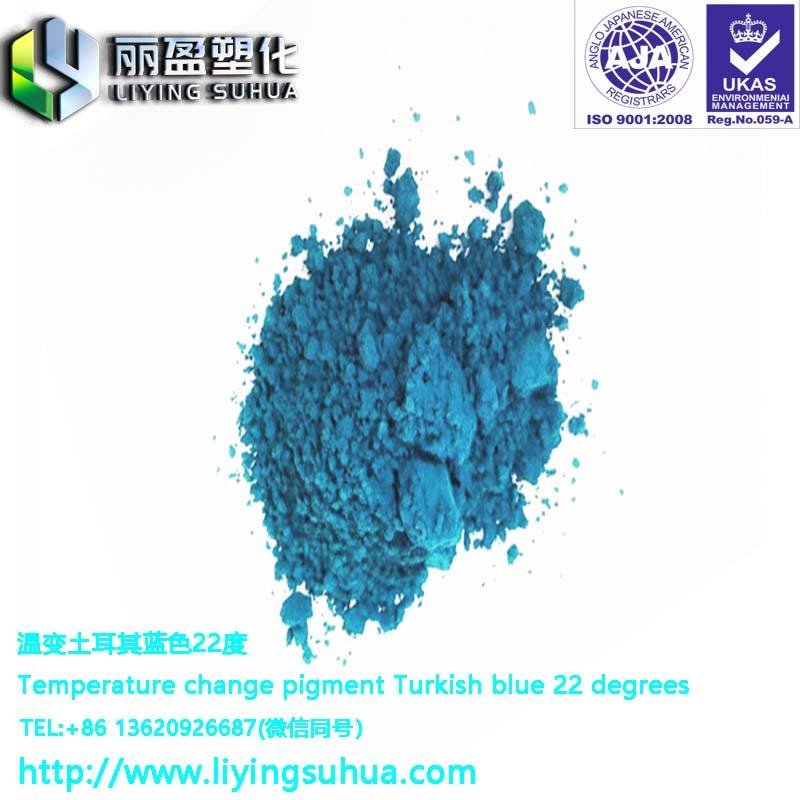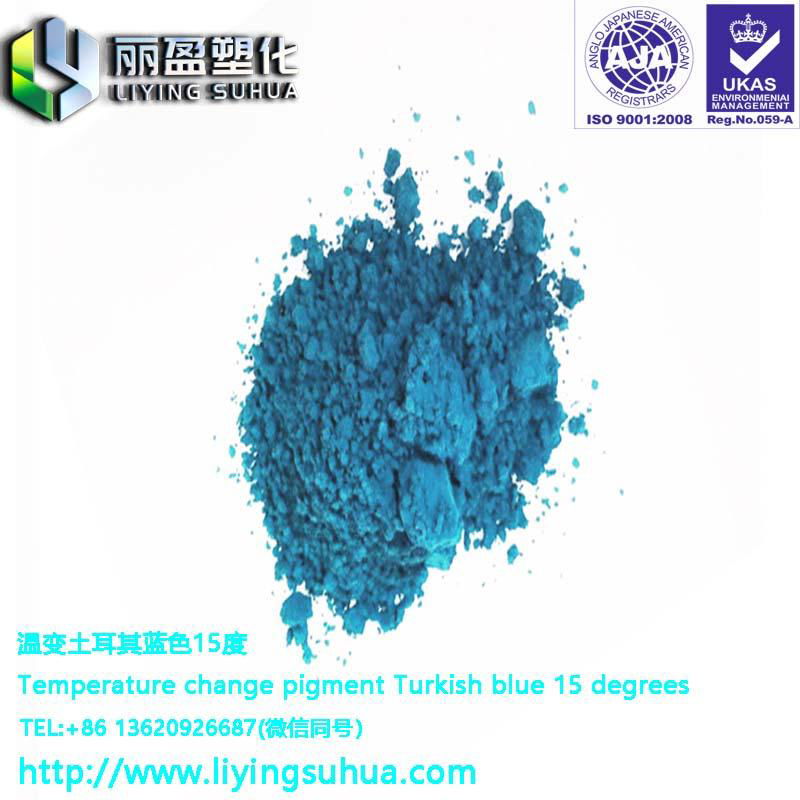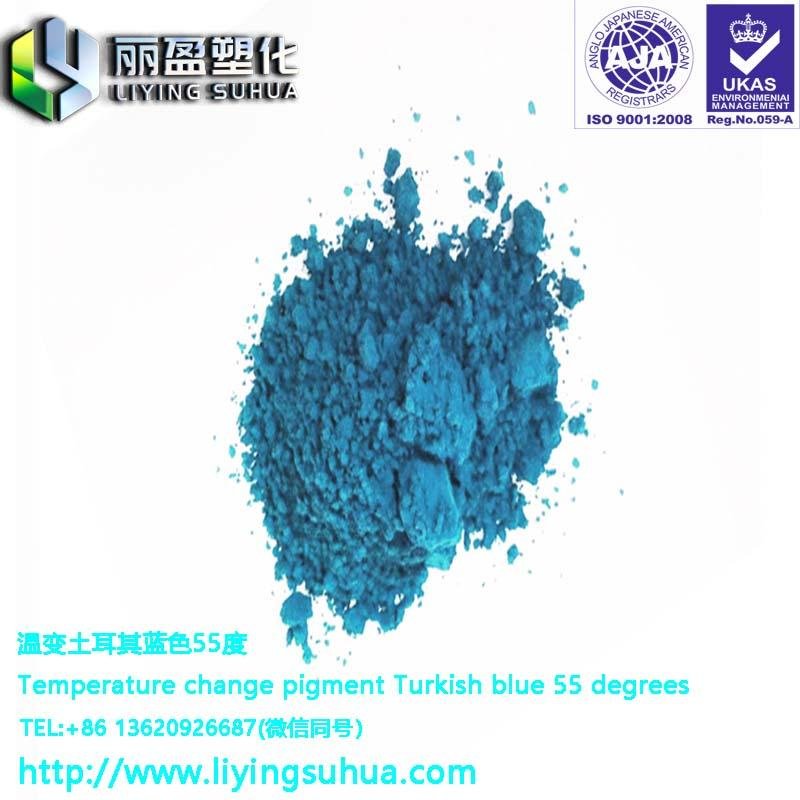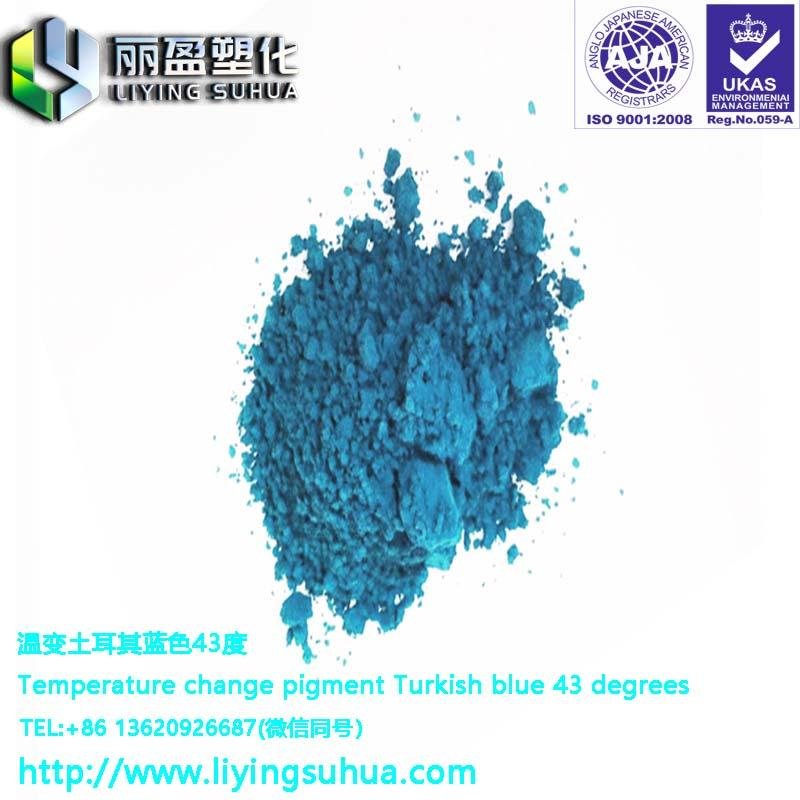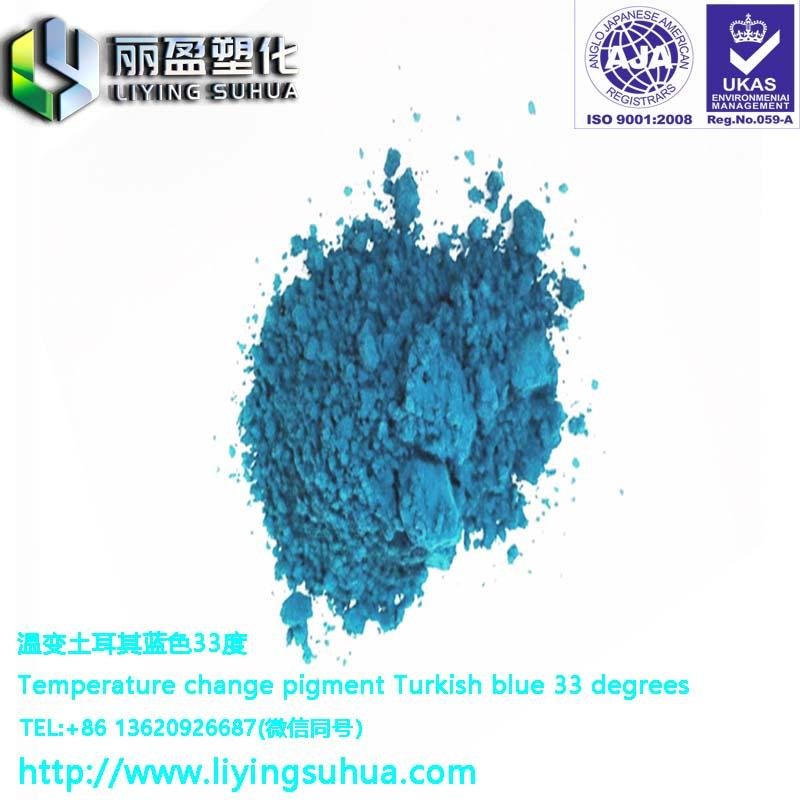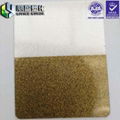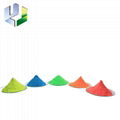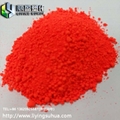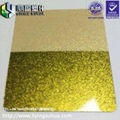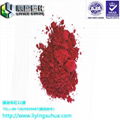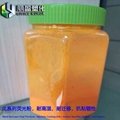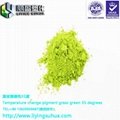| Model: | Red |
|---|---|
| Brand: | liying |
| Origin: | Made In Korea |
| Category: | Chemicals / Dyes & Pigment |
| Label: | Light temperature ch , Discoloration |
| Price: |
-
|
| Min. Order: | 1 kg |
Product Description
Thermochromic material
Principle
The microcapsules are coated with a stealth dye, a color forming agent and a temperature controlling agent. By selecting different temperature control factors, it is possible to produce color materials with different temperature intervals.
2. Product Description
Principle of discoloration: low temperature color development and high temperature colorless
Product range available: -15 ° C ~ 70 ° C
Basic color: 15 colors can be provided for each temperature. Each color can be mixed with each other. Other color materials can be added. The following colors are close to the PANTONE color code. The color of the product is subject to the actual material.
Advantages of thermochromic pigments in plastic products:
Thermochromic pigments are suitable for injection molding and extrusion:
Its characteristics are: thick wall of the capsule, high strength, good heat resistance, easier to disperse evenly, and less residual color during decolorization.
Scope of application:
This product can be used for injection molding and extrusion molding of transparent or translucent plastics such as polyethylene (PE), polypropylene (PP), polystyrene (PS), soft polyvinyl chloride (S-PVC), AS, ABS and silica gel. . It can also be mixed with unsaturated polyester, epoxy resin, plexiglass or nylon monomer for casting, molding and curing.
Dosage:
When used for injection molding, extrusion processing or casting, molding, and curing, the color changing pigment is used in an amount of 0.5% to 1.0% by weight of the plastic. The color-changing pigment should be thoroughly mixed with the plastic particles (a small amount of white oil can be used when mixing). If the ordinary pigment is color-matched with the color-changing pigment, the ordinary pigment (or dye) is used in an amount of about 0.5 to 2.5% of the color-changing pigment.
Color masterbatch:
In mass production, color-changing pigments can be added to polyethylene wax or polystyrene wax to prepare a color masterbatch with a pigment content of 10%, and then mixed with plastic particles. This allows the discoloration pigment to be more uniformly dispersed.
temperature:
The processing temperature should be controlled below 200 °C, not more than 220 °C, and minimize the heating time of the material. (High temperature, long-term heating will impair the discoloration performance of the pigment).
Precautions:
After the injection molding is finished, the cold water is rapidly cooled, and the color density of the product is better. (natural cooling, slow heat dissipation of the product will lead to product color fading or discoloration effect deterioration)
A : When using color-changing pigments in injection molding and extrusion, other fillers or common pigments (such as titanium dioxide, calcium carbonate, barium sulfate, carbon black, etc.) should not be used in the plastic at the same time, otherwise the color change effect will be shielded.
B: When using color-changing pigments in casting, molding and solidification, the color-changing pigment should be added to the unsaturated polyester, plexiglass or nylon monomer to stir and disperse uniformly, and then the initiator or curing agent is added to start the polymerization or crosslinking reaction. Since the viscosity of the system rises sharply after the prepolymerization, the addition of the color-changing pigment at this time causes a large amount of pigment particles to be wrapped together and is difficult to disperse uniformly. In addition, the agitation operation at this time also causes a large amount of air bubbles to remain in the system.
C: Careful selection of cross-linking agent or curing agent: During the cross-linking curing process of epoxy resin and unsaturated polyester resin, strong shrinkage stress sometimes occurs inside the epoxy resin and microcapsule shell, and other chemicals enter. The interior of the pigment loses its discoloration properties. This is often the case when the epoxy resin is cured to a thickness greater than 0.2 mm and a polyamine curing agent is used.
D: Premixing of plastic particles and color-changing pigments cannot be carried out using high shear equipment such as mixers, kneaders, high-speed dispersers, and twin-screw extruders. These devices can severely damage the protective layer on the surface of the color-changing pigment, causing it to lose its discoloration properties. In addition, the color changing pigment should be prevented from undergoing repeated extrusion granulation operations in the preparation of the color masterbatch.
storage method:
The reversible thermochromic pigment itself is an unstable system (it is difficult to change when it is stable), so its resistance to light, heat, and aging is far less than that of ordinary pigments, and should be noted in use.
Member Information
| Shenzhen Liying Plastic Chemical Co., Ltd. | |
|---|---|
| Country/Region: | Guang Dong - China |
| Business Nature: | Manufacturer |
| Phone: | 13620926687 |
| Contact: | Li Yongli (manager) |
| Last Online: | 03 Jan, 2025 |
Related Products of this Company
-
Symphony colorful pearl powder
-
Ink printing injection long and short
-
Warming and color-reducing special
-
Injection coating ink fluorescent
-
gold pearl powder
-
Wholesale variety of low temperature
-
Anti-stick roller anti-dialysis
-
Thermochromic microcapsule
-
Photochromic microcapsule pigment
-
Chameleon pearlescent pigment
